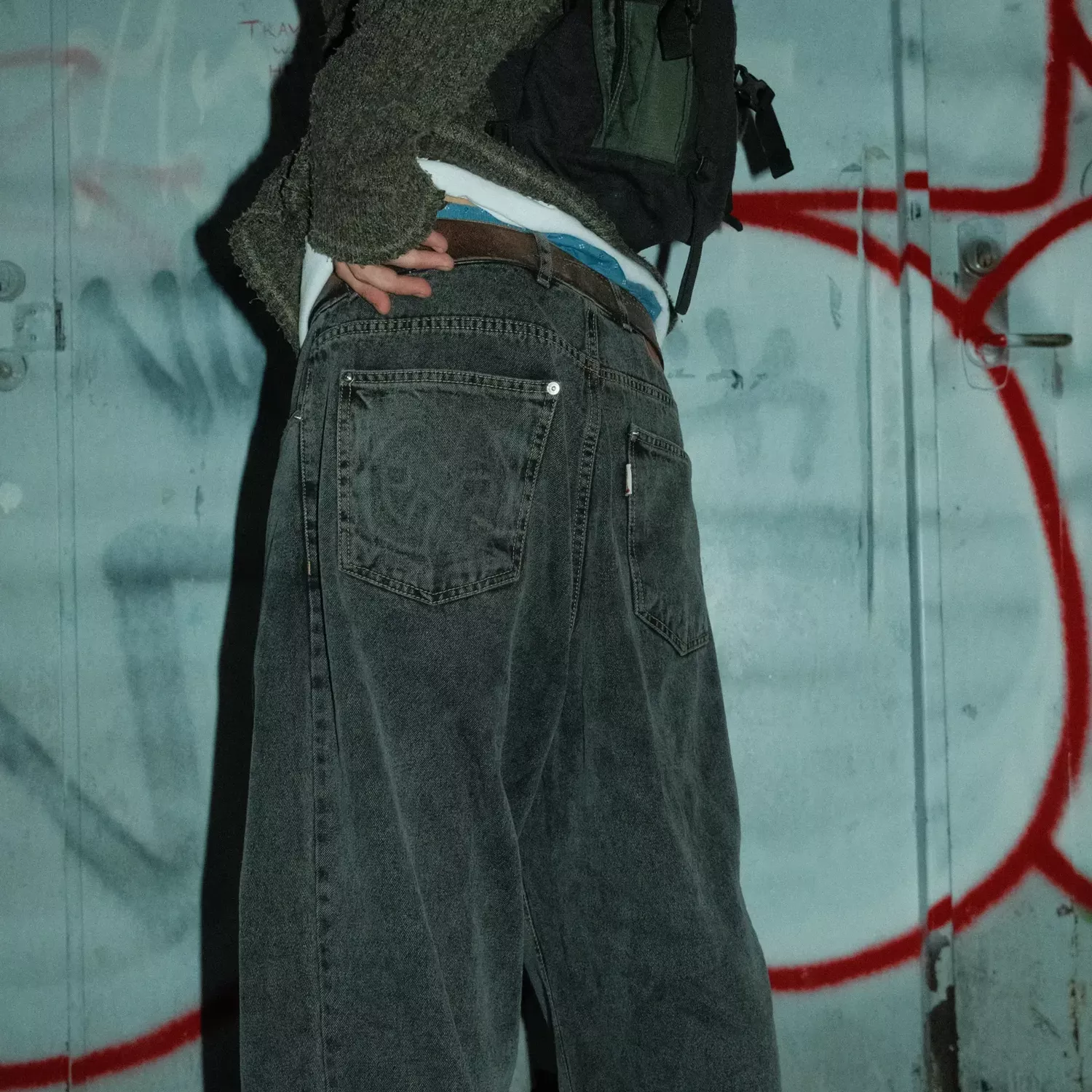In the words of Eva Hardware's founder Per Larsson Persson, the mission of brand Eva Byxa is "to be a part of saving Swedish skateboarding"
Lots has been written about Södermalm. Stockholm’s Williamsburg is known for its hipsters, bars, and vintage shops. Skateboarding and skate culture weren’t really part of that conversation until a few months ago when Eva Hardware opened with a mission “to be a part of saving Swedish skateboarding.” Per Larsson Persson, Eva Hardware’s founder, has been skating for decades. “My grandma gave me my first skateboard, and after that I was hooked,” he says. “It was perfectly dangerous and strange.” Not to mention stylish. With the launch of the brand’s first jeans, the Eva byxa, Eva Hardware just might become a stealth fashion source – even if that isn’t Persson’s intention.
Largely spurred by the Olympics (which now includes skateboarding), fashion has embraced the idea of sports this year, borrowing the aesthetics of training gear, if not its functionality and performance aspects. Eva comes at denim from the opposite perspective. Persson speaks “skateboarding fluidly” because he’s been at it for a long time. Eva has the added benefit of having a team to test the denim, which they did for more than a year before they went into production.
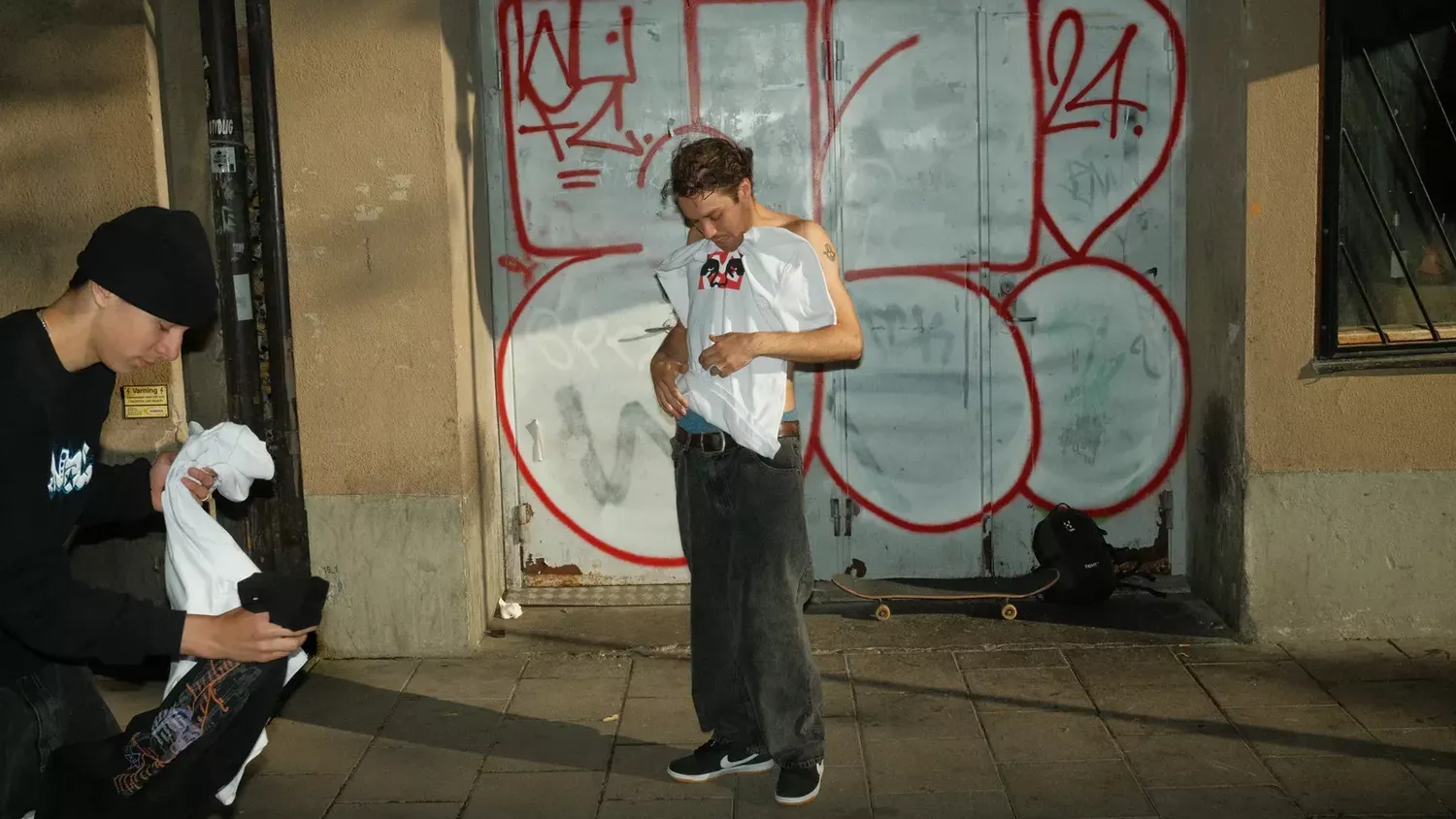
Photo: Emanuel Koroly / Courtesy of Eva Hardware
Persson says of the Eva byxa, “They are made of 13.5 ounces of yummy denim. They are straight cut, slightly tapered, and we made the legs a bit shorter than normal jeans because the ends are the first thing that gets torn when you skate. So far that’s been very appreciated.” They also have an innovative sizing system, based on how skaters actually shop for pants, and a great pocket detail that becomes more evident with use, much like how denim gets better with age.
The “extra spicy thing about this,” he says, “is that we created a new size, an extra medium that’s in between medium and large. A lot of skaters tend to weigh in between medium and large. And the kids always ask, ‘What’s the smallest size you’ve got?’ so we call the sizes Smallest to Biggest, basically XS to XL.”
Related: Kim Kardashian and Swedish CEO Jens Grede bring Skims to Sweden: Everything you need to know
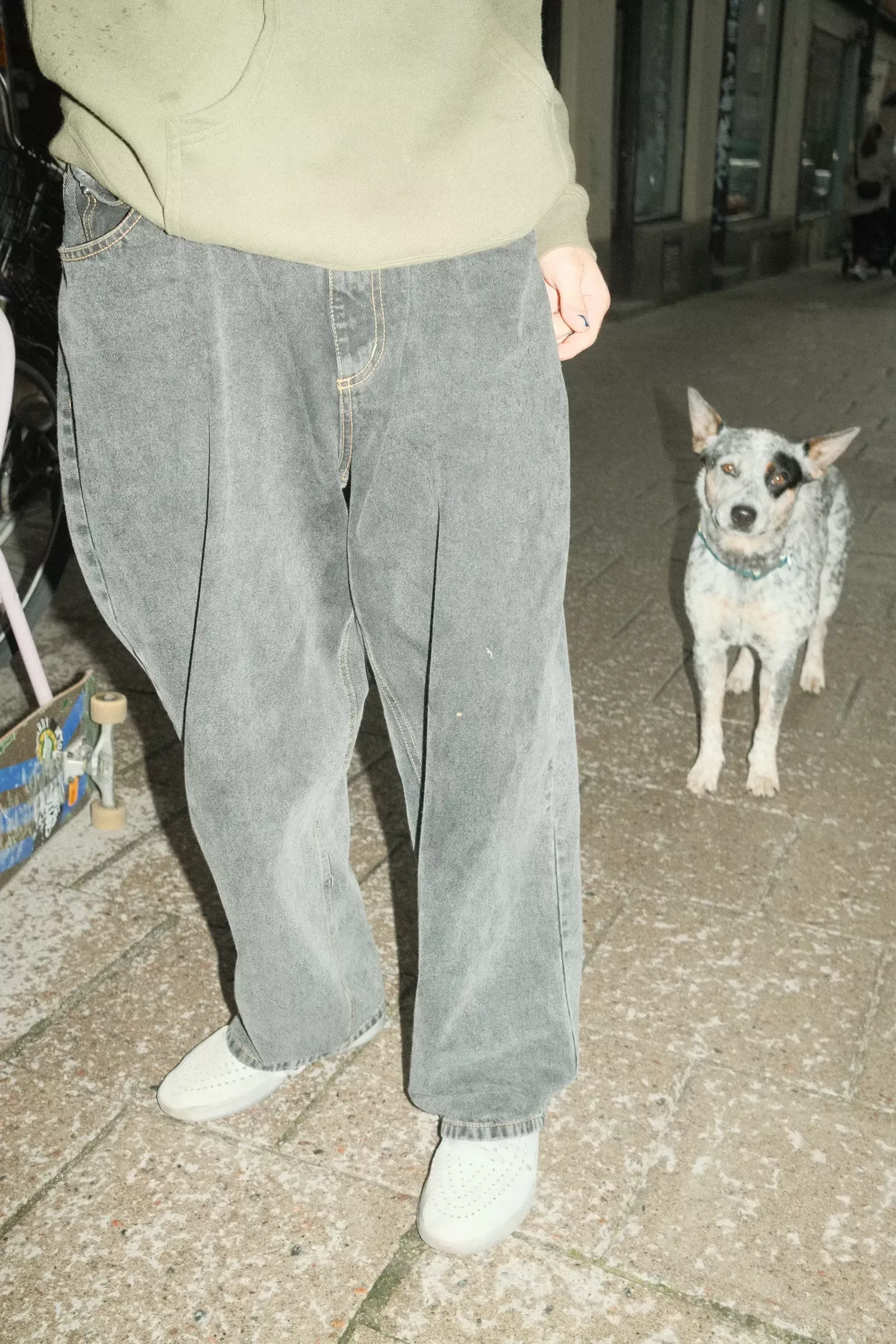
The Eva byxa . Photo: Emanuel Koroly / Courtesy of Eva Hardware
As for that secret pocket detail, it’s an embroidered logo on the inside that makes the fabric above it protrude. “The logo gets more visible the more you wear the jeans. The more you flow, the more it shows. The more you wear, the more it appears.”
Achieving this visibility is a very different kind of activation than a blockchain tag and arguably more exciting because it has to do with lived (often shared) experiences, time, and action. You have to put in the work, and that has a certain appeal in an age of instant gratification and flattened global culture.
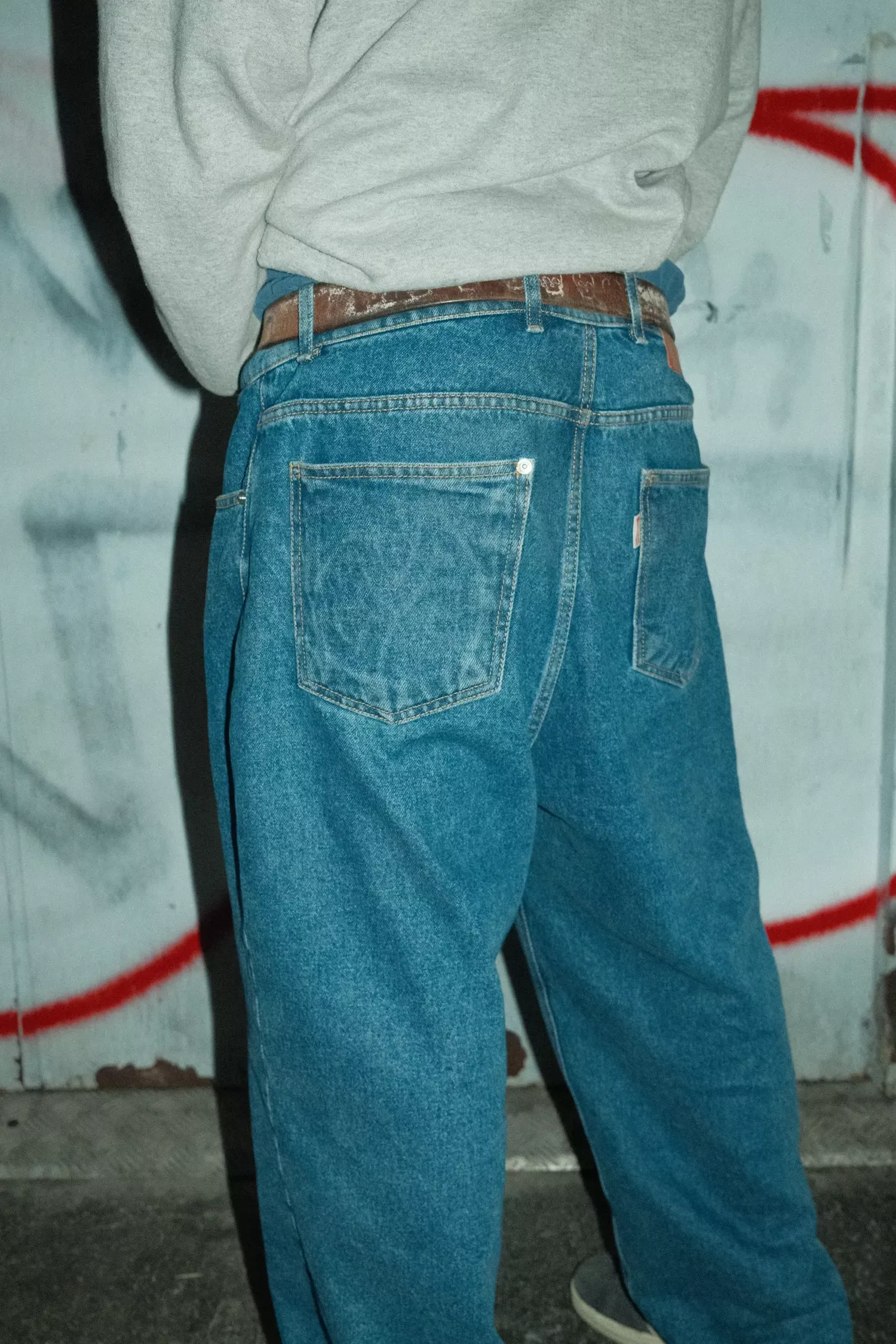
Photo: Emanuel Koroly / Courtesy of Eva Hardware
“Now that we’re public with the brand, it’s become very clear that a lot of people outside of skateboarding are interested in this,” Persson muses. “Maybe it’s one of the few things that actually feels authentically subcultural. If you wear a Chanel T-shirt, for example, you’re like, I’m this person, but if you wear a skateboarding T-shirt, then you’re like, I’m with these people.”
That sense of belonging, of community, is as important an aspect of Eva Hardware as the boards, wheels, and even the metal riser pad (used to keep the wheels from hitting the deck) they made for Danish skater star Ville Wester. “People have been screaming for a real skateboard shop and brand for a long time,” Persson says. “I grew up in skateboarding shops. We sat on the couch, talked to the older guys, and asked them questions. But the kids now don’t know that experience, so we have to teach them, and that’s really beautiful.”
The Eva byxa is on sale from Friday, October 25, 2024.
Here, Persson tells us more about the shop and its activities.
How did you come up with the name?
Per Larsson Persson: When we first started playing with the idea of a skate brand, I was into old-lady aesthetics, like granny squares and chinaware. The first idea was to do a board that looked like a plate, something that would be funny to break. My creative process at the time was to channel an old lady, hence coming up with a good name for a Swedish lady – plus I really like three-letter logos. Someone told me that [Eve] is the first name in history, which makes sense. A lot of Evas buy our stuff; sometimes, it feels like the name is just there for them to feel special.
What is the mission of the shop?
To put it simply: to be a part of saving Swedish skateboarding. Skate shops really are a dying breed in Sweden. Perhaps six or seven are left from what was about 30. Skateboarding has never been as popular as it is today. Unfortunately, this means industrialisation. It’s very hard to compete with the bigger companies and web shops that eat up all the actual skater-owned shops.
And what has the reception been?
Really good! We had an amazing summer with lots of events, and people seem to think it’s important to have a real place that represents our culture. I was afraid the neighborus would get crazy from all the noise skaters make, but everyone has been very receptive so far.
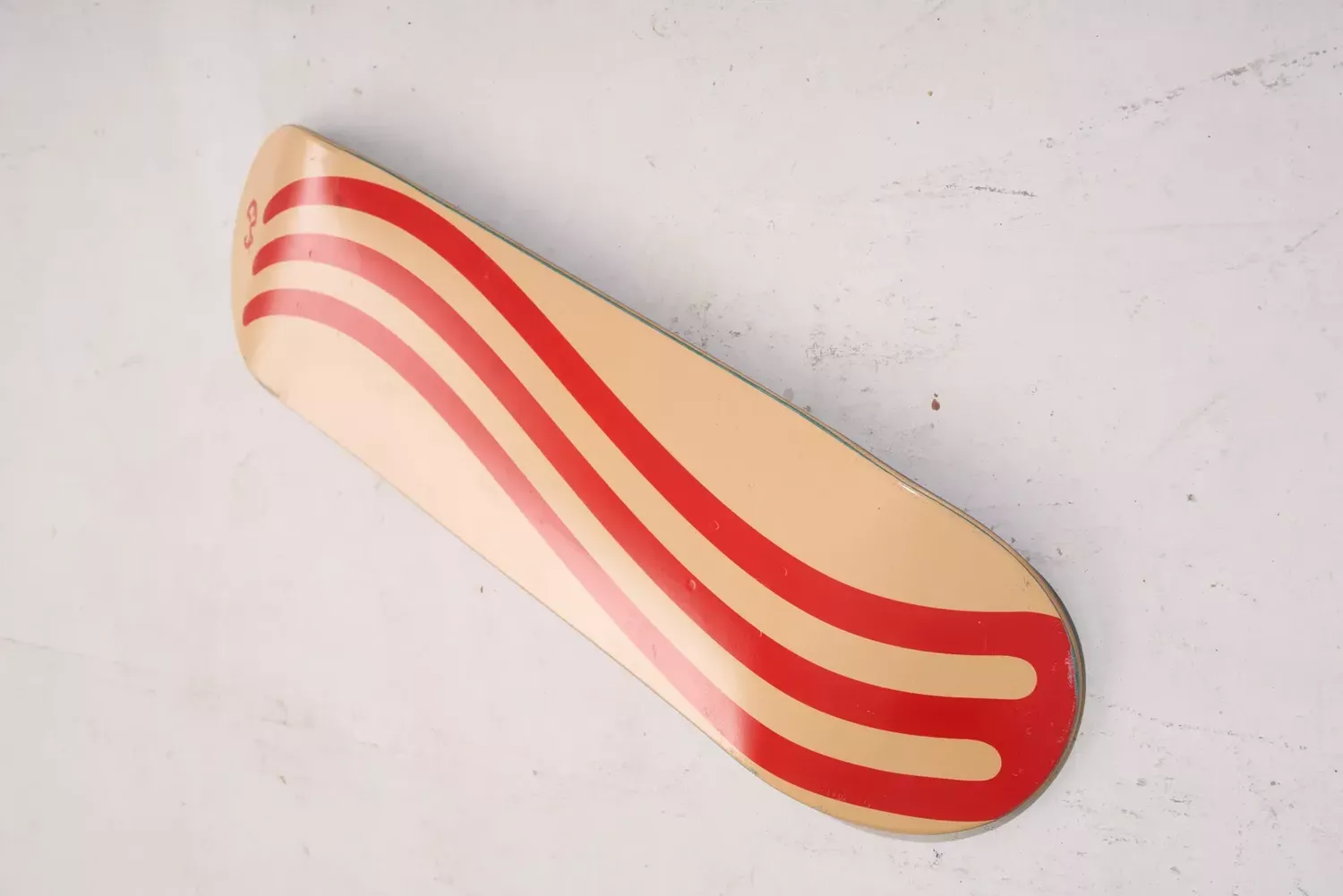
The first Eva Hardware deck Photo: Per Larsson Persson / Courtesy of Eva Hardware. Photo: Per Larsson Persson / Courtesy of Eva Hardware
What are some of those fun projects?
The first board we did is still a very fun graphic. You can tell it’s an Eva board from far away. I also very much like to play with Scandinavian design. In 2023, we did a board [featuring] a classic Stockholm subway train that retired, and then we invited a lot of classic graffiti writers to paint on the decks. This year we did the same thing with the old train in Scania and for the Fotografiska Museum. We just did a board and T-shirt with Obey for the Shepard Fairey show.
We also try to do events for the community and neighbourhood. Everyone is supposed to feel welcome to our bubble. Once a month we invite a DJ to do their thing in the shop. Since everyone’s a DJ these days, we try to get someone with a cool origin story or an extra skill or niche. The space is too small to host a crowd, so the window works as a stage with the audience outside on the street. We livestream on Instagram and then put the mix on SoundCloud.
How have you observed the scene changing over time?
I don’t think people understand how much skaters talk about skateboarding. All we do is observe and compare the now to the then – at least my generation. One thing me and my colleague Danijel often talk about is how there’s no need for a crew anymore. I’m not saying that there’s no groups of friends or crews anymore, but a skater can make it to the top now with just an Instagram account and an energy-drink sponsor. When we started out it was a bare necessity to be part of a crew, otherwise you wouldn’t survive! There were very clear roles for everyone, and everyone was needed in the group. I miss that.
Originally published on Vogue.com.
